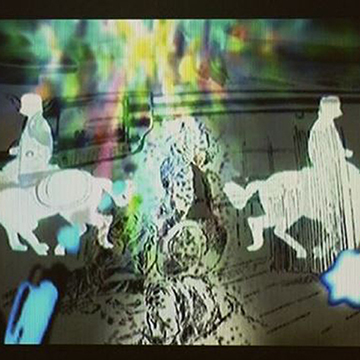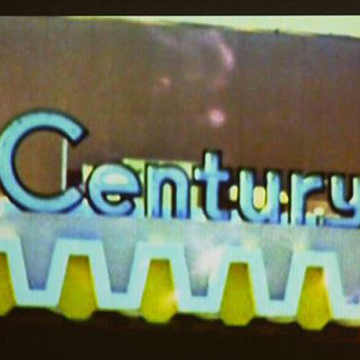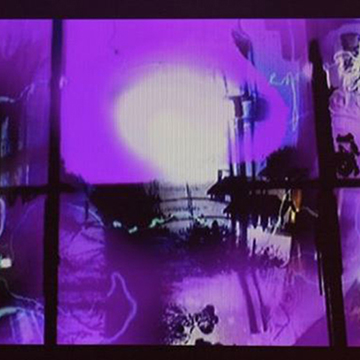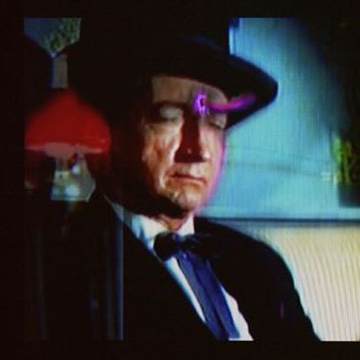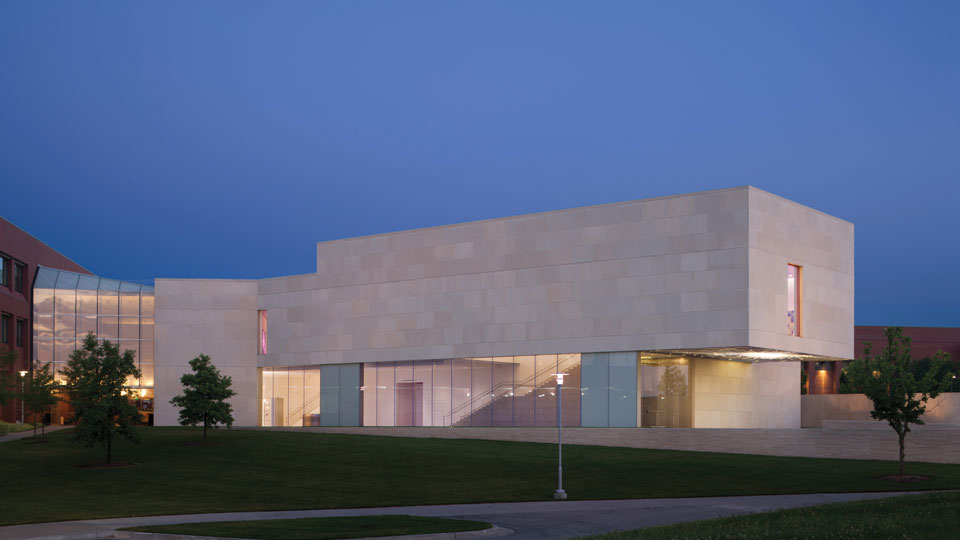Jeremy Blake · Century 21
Century 21, of the Winchester trilogy, was inspired by my interest in the Winchester Mystery House in San Jose, California. The Mansion is an architectural wonder that Sarah Winchester, widow of the heir to the Winchester rifle fortune, constructed over the course of 38 years, beginning in the late 1800’s. After suffering the premature death of her child and then her husband, Winchester, informed by her deep belief in Spiritualism, concluded that the angry spirits of those struck down by her family’s guns had cursed her. An advisor agreed and suggested that she build an enormously large house – an endeavor that would both accommodate good spirits and ward off evil ones with the sounds of never ending construction. The result is an eccentric, sprawling mansion, well outfitted for the undead with staircases going nowhere, doorways leading out into open air several stories above ground, and miles of darkened hallways for the spirits to roam.
The Winchester films, Winchester, 1906, and Century 21, combine 8-mm film footage, static 16-mm shots of old photographs, hundreds of ink drawings, and intricate frame-by-frame digital retouching. They are meant to provide an abstract and emotional tour – not so much of the architecture, but of some more fearful chambers of Sarah Winchester’s mind. The abstract imagery represents supernatural activity, heightened by paranoiac glimpses of shadowy gunfighters, painterly gunshot wounds blossoming into Rorschach patterns, and a spectrum of images from Winchester rifle advertisements. The entire series is informed by the idea that the Victorian aesthetic (embodied by the Mansion’s architecture) and the psychedelic sensibility (referenced through hallucinatory manipulation of the film) are sympathetic opposites.
My interest in the Mansion is rooted in an understanding that the site is more than just a monument to one person’s eccentric preoccupation – it is the tangible outcome from a collision of social and historical narratives. The series ties together several mythic strands fundamental to American national identity in an attempt to justify Winchester’s architectural free-for-all. The figure of the gunfighter facilitates spiritual regeneration through violence, and lawmen and outlaws are thus treated with reverent trepidation – as are the ghosts of their victims.
Beneath the dreamlike flow of images, the structure of the film is very deliberate. Winchester, 2002, first explores the exterior of the Winchester Mansion. 1906, 2003, reveals glimpses of the interior, with an emphasis on parts destroyed in the earthquake of 1906. Sarah Winchester chose not to repair certain damaged sections, preferring to build around them, as she imagined that the house’s resident spirits disapproved of these accommodations. In Century 21 the camera moves out to the roof of the house and zooms in on three space-age movie theaters that are now across the street: Century 21, Century 22, and Century 23, alluding to the fact that it is the film, TV and the media that perpetuate the icon of the gunfighter. Pop-culture imagery emerges toward the end of the work, including a modified Charles Addams cartoon of children playing cowboy, as well as celebrity figures (artist Richard Price; playwright/actor Sam Shepard; and actress Raquel Welch as gunslinger Hannie Caulder) appearing as phantom stand-ins to embody the specters of the Cowboy and of Sarah Winchester herself.
— Jeremy Blake, 2004
Artist Jeremy Blake was born in 1971 in Fort Sill, Oklahoma. Blake received his BFA in 1993 from the School of the Art Institute of Chicago and his MFA in 1995 from the California Institute of Arts, Valencia.
